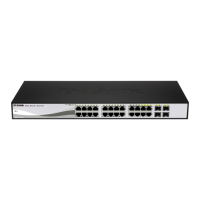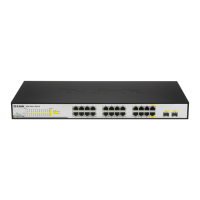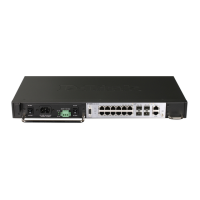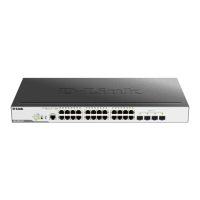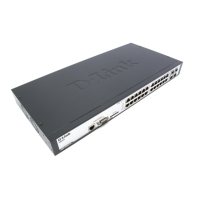5 Surveillance Mode Configuration D-Link Smart Managed Switch User Manual
1
1
2
2
9
9
NOTE: The system probes for new IP-Cameras every 30 seconds.
Device Information
This tab on the Surveillance Overview page and is divided into 3 parts; a device information section, PoE
utilization section and bandwidth usage section.
To view the following window, click on the model number of the switch at the top of the navigation menu and
the click the Device Information tab:
Figure 5.6 – Surveillance Mode > Device Information Tab
The device information section is sub-divided into 3 sections; switch information, web information and system
information. It contains information such as the device type, system name, serial number, IP address settings,
MAC address settings, firmware versions and system uptime.
The PoE utilization area contains PoE utilization statistics for the switch. On the left is the total PoE utilization,
with the total power budget and overall utilization show. On the right is a per-port usage graph, showing the
PoE utilization for each individual port.
The bandwidth usage section contains bandwidth utilization for the switch. On the left the total bandwidth
shows the total inbound traffic on all ports. There is also a per-port bandwidth utilization graph on the right,
showing the inbound traffic for each individual port. The scale of the graph can be changed by pressing the
1000 Mbps and 50 Mbps buttons above the graph.
Click the 1000 Mbps button to change the maximum bandwidth displayed in the Bandwidth Utilization
chart to 1 Gbps.
Click the 50 Mbps button to change the maximum bandwidth displayed in the Bandwidth Utilization chart
to 50 Mbps.
Port Information
The Port Information page displays the port status for each port. This information includes the throughput,
PoE status, Loopback Detection Status, cable length, power consumption and how many IP cameras, NVRs,
and other devices are connected to the ports.

